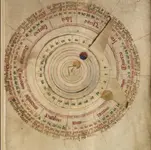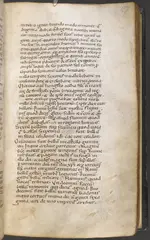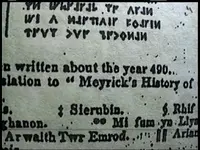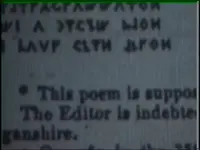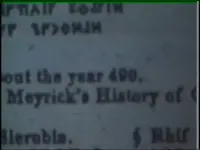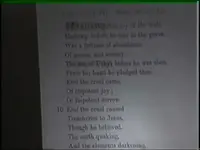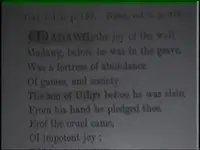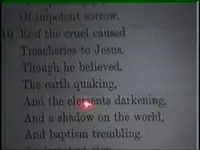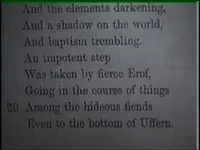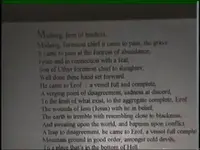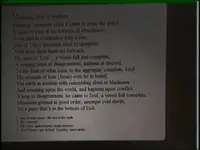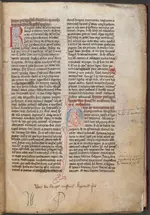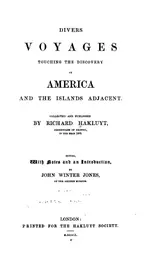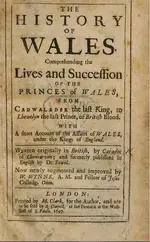Gidday Amigo
I do not live in planet America I live on planet earth. I do not have American centrist view on the world nor any other country. I have lived and worked in many countries I am just after facts not looking to reinforce any cultural narratives or beliefs. Having no agenda to rewrite history to suit my cultural beliefs, because in essence I am a stateless person my flag is a flag of convenience. I am open to any hypothesis providing there is compelling case supported by facts.
Being open minded enough to take the time to try to verify some your claims.Yet your mish mass of claims are just not supported by verified known "facts"
Thus amigo the alleged Arthurian presence in America or alleged connection to Oak island is fatally flawed.
The Welsh monk Nennius (9th century CE) in his History of Britain is the first to mention Arthur by name.
Here the very words written of Arthur below taken from...
Historia Brittonum a purported history of the indigenous British (Brittonic) people that was written around 828 and survives in numerous recensions that date from after the 11th century
Then it was, that the magnanimous Arthur, with all the kings and military force of Britain, fought against the Saxons. And though there were many more noble than himself, yet he was twelve times chosen their commander, and was as often conqueror.
The first battle in which he was engaged, was at the mouth of the river Gleni. The second, third, fourth, and fifth, were on another river, by the Britons called Duglas, in the region Linuis. The sixth, on the river Bassas. The seventh in the wood Celidon, which the Britons call Cat Coit Celidon.
The eighth was near Gurnion castle,where Arthur bore the image of the Holy Virgin, mother of God, upon his shoulders, and through the power of our Lord Jesus Christ, and the holy Mary, put the Saxons to flight, and pursued them the whole day with great slaughter.
The ninth was at the City of Legion, which is called Cair Lion. The tenth was on the banks of the river Trat Treuroit. The eleventh was on the mountain Breguoin, which we call Cat Bregion.
The twelfth was a most severe contest, when Arthur penetrated to the hill of Badon. In this engagement, nine hundred and forty fell by his hand alone, no one but the Lord affording him assistance. In all these engagements the Britons were successful. For no strength can avail against the will of the Almighty.
That is the only mention of him in that book. Not quite fanciful legend we hear to day knights of round table etc....
We can go to the National library of Wales in Aberystwyth there is books that can be found below
The Book of Aneirin (Welsh: Llyfr Aneirin) is a late 13th century Welsh manuscript containing Old and Middle Welsh poetry attributed to the late 6th century Northern Brythonic poet, Aneirin, who is believed to have lived in present-day Scotland. The manuscript is kept at the National Library of Wales, Aberystwyth
The Black Book of Carmarthen, so called because of the colour of its binding and its connection with the Priory of St John the Evangelist and Teulyddog, Carmarthen, is now thought by modern scholars to be the work of a single scribe writing at different periods of his life before and about the year 1250. It is believed to be the earliest surviving complete manuscript written in the Welsh language. It was designated one of the 'Four Ancient Books of Wales' by William Forbes Skene (1809-92), although he believed it to have been written much earlier in the twelfth century. This book has a brief mention of Arthur in Poem.
The White Book of Rhydderch (Welsh: Llyfr Gwyn Rhydderch, National Library of Wales, Peniarth MS 4-5) is one of the most notable and celebrated surviving manuscripts in Welsh. Mostly written in southwest Wales in the middle of the 14th century (c. 1350) it is the earliest collection of Welsh prose texts. This book has a brief mention of Arthur in Poem. What was one manuscript was divided into two in the medieval period and has been bound as two separate volumes,
known as Peniarth MS 4 and Peniarth MS 5. Peniarth MS 4 contains the most important material:
medieval Welsh tales now collectively known as the Mabinogion
The History of Kings text is that of Geoffrey of Monmouth’s highly influential Historia Regum Britanniae (‘History of the Kings of Britain’), translated into Welsh as ‘Brut y Brenhinedd’ (‘History of the Kings’) . The Latin Historia,
written c. 1135, traced the descent of the Britons back to Brutus, the eponymous founder of Britain, who settled on the island with his followers after the fall of Troy. It provided the first full biographical account of king Arthur, and was extremely popular and influential in Wales. The Welsh text appeared in the 13th century, and survives in over 60 manuscripts. This copy is associated with, and perhaps partially derived from, Peniarth 21, which dates from the early 14th century. It is now considered to have no value as history. As many account are seen as inaccurate.
So from these and others very some what brief mentions of Arthur we have of this legendary folk figure.
So it has been easy to manipulate such figure into anyone's historical narrative?
Crow

